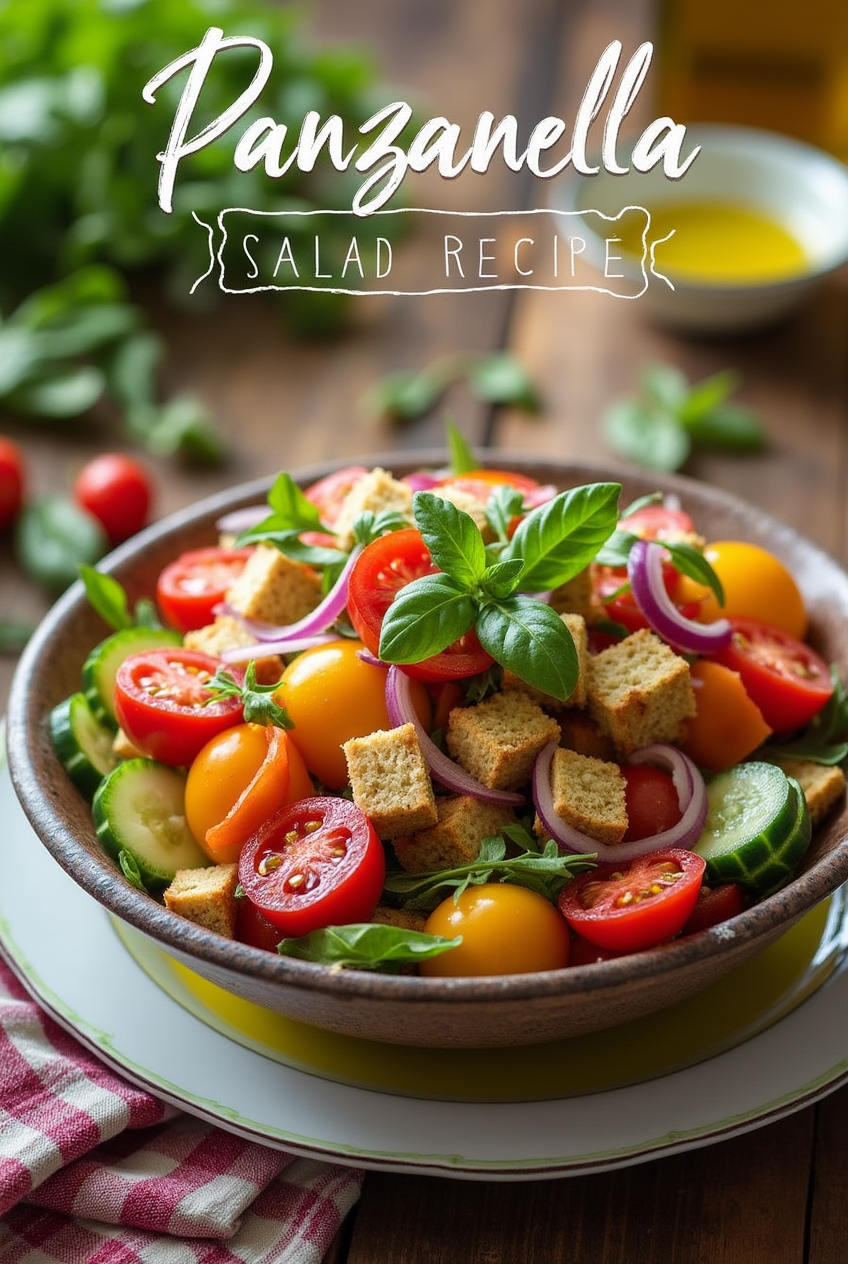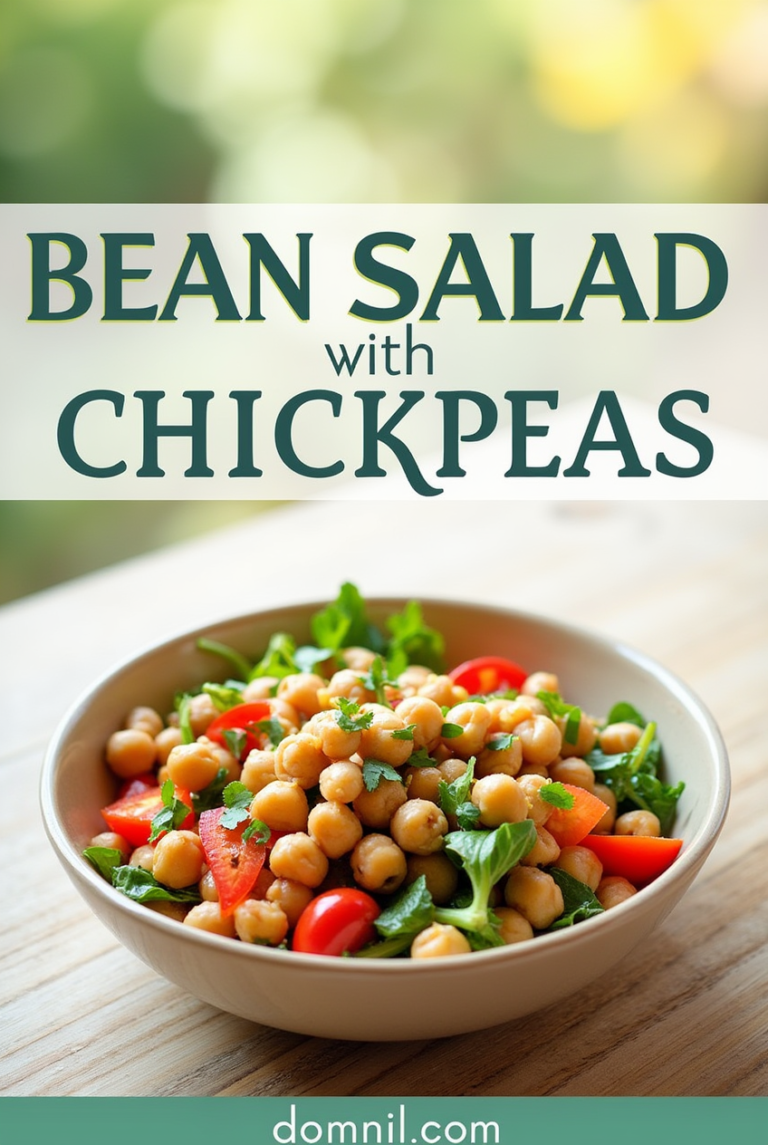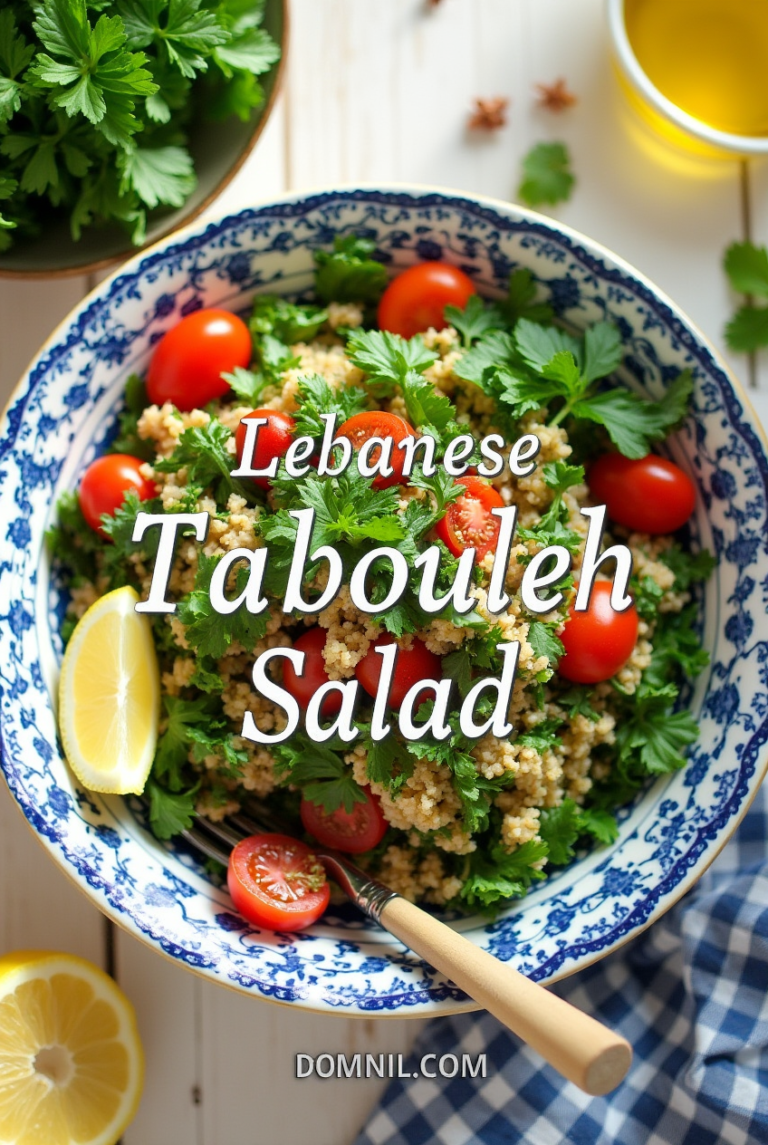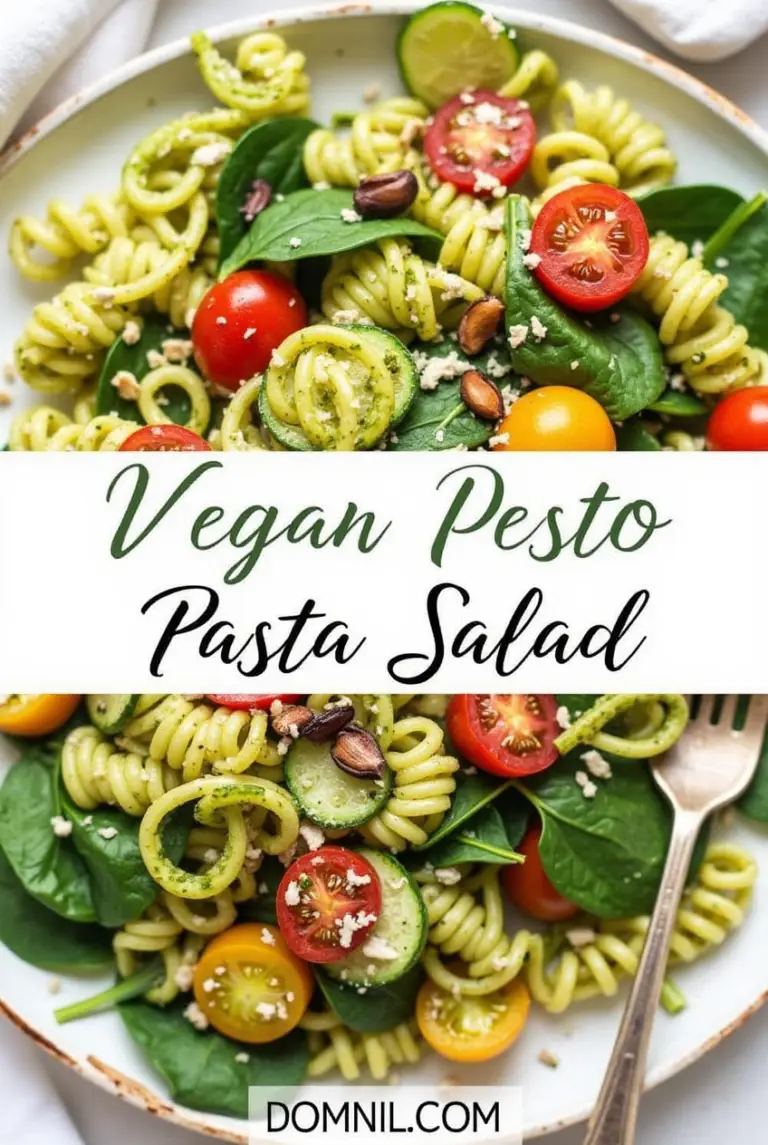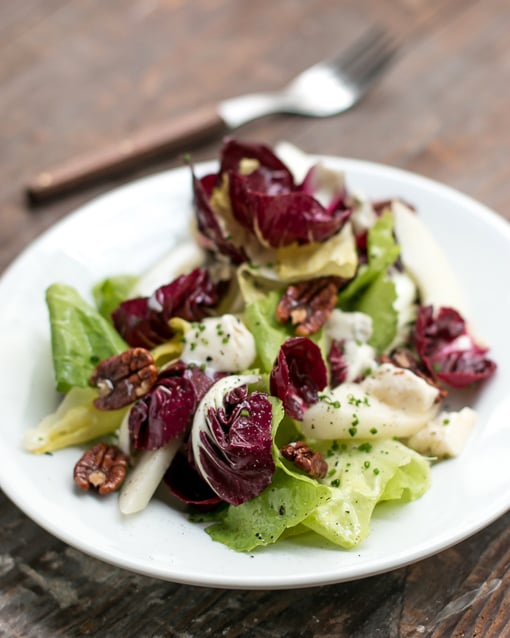Panzanella Salad Recipe: A Vibrant Summer Classic
When summer tomatoes reach their peak of ripeness, there’s no better way to celebrate their sweet, juicy perfection than with an authentic Panzanella salad recipe. This centuries-old Tuscan bread salad transforms humble ingredients—stale bread, garden vegetables, and simple seasonings—into a vibrant dish that captures the essence of Italian countryside cooking. Born from peasant traditions of using every resource wisely, Panzanella has evolved from a simple way to use day-old bread into a celebrated summer staple that appears on tables from rustic farmhouses to upscale restaurants throughout Italy and beyond.
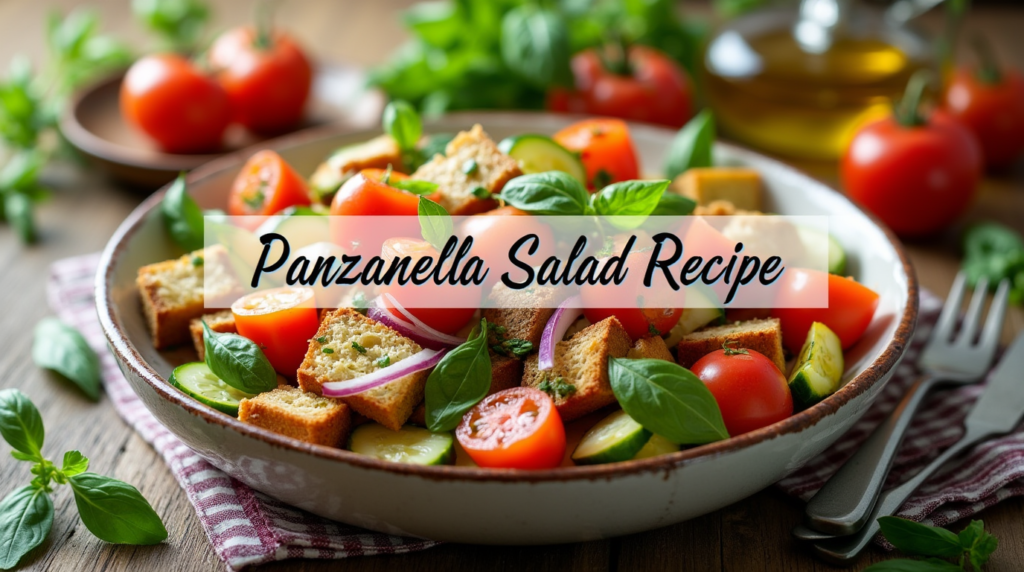
The Art of Selecting Ingredients
Bread Selection
The foundation of any great Panzanella salad recipe is the bread. Traditional Tuscan bread, made without salt, is ideal because its neutral flavor allows it to take on the bright tastes of the other ingredients. However, any good-quality artisan bread with a firm crust and open crumb structure will work beautifully. Ciabatta, sourdough, or country loaves are excellent choices. The key is that the bread must be sturdy enough to absorb moisture without disintegrating completely.
The bread should be at least a day old—fresh bread will become soggy rather than pleasantly tender when mixed with the dressing. If you only have fresh bread, don’t worry; toasting it in the oven will dry it out appropriately.
Tomato Selection
Tomatoes are now the star of this salad, so their quality cannot be compromised. The best Panzanella salad recipe relies on fully ripe, in-season tomatoes bursting with flavor. Heirloom varieties offer beautiful color variation and complex flavors, but any ripe, juicy tomato will work. Roma tomatoes, though less juicy, can be used in a pinch, but you may need to compensate with additional dressing.
The tomatoes’ natural juices form an essential part of the dressing, which is why salting them first to draw out their moisture is a crucial step in the process.
Instructions
- Prepare the bread: If your bread is fresh rather than stale, preheat oven to 350°F (175°C). Spread bread cubes on a baking sheet and toast for 10-15 minutes until dried and slightly golden. Allow to cool completely. For an authentic touch, you can rub a cut garlic clove over the toasted bread cubes while still warm.
- Make the tomato base: Place cut tomatoes in a colander set over a bowl. Sprinkle with 1/2 teaspoon salt and gently toss. Let sit for 15 minutes to draw out juices. Reserve these tomato juices for the dressing. This step not only begins to flavor the tomatoes but creates the foundation of your dressing with natural tomato essence.
- Create the dressing: In a small bowl, whisk together the collected tomato juices, olive oil, red wine vinegar, remaining salt, and a few grinds of black pepper. For additional depth, you can add a teaspoon of Dijon mustard or a minced garlic clove. The ideal dressing should have a perfect balance of acidity from the vinegar and tomatoes, richness from the olive oil, and seasoning from the salt and pepper.
- Prepare the onions: For a gentler onion flavor, place the sliced red onions in a bowl of cold water for 10 minutes, then drain thoroughly and pat dry. This quick soak removes some of the harsh bite while maintaining the onion’s crisp texture and beautiful color.
- Assemble the salad: In a large bowl, combine the bread cubes, drained tomatoes, cucumber, red onion, and any optional additions like bell pepper or capers. If using herbs beyond basil, such as parsley or oregano, they can be added at this stage.
- Dress and marinate: Pour the dressing over the salad and toss gently to combine. Let the salad sit for at least 30 minutes at room temperature, tossing occasionally to ensure the bread absorbs the flavors. This resting period is not just a suggestion—it’s essential to the dish’s development, allowing the bread to soften just enough while still maintaining some texture.
- Finish and serve: Just before serving, add the torn basil leaves and toss once more. Fresh basil is added at the end to preserve its bright flavor and prevent blackening. Taste and adjust seasoning if needed. Drizzle with a bit more extra virgin olive oil for richness and visual appeal.
Pro Tips
- Use the best quality olive oil you can afford—its flavor is prominent in the finished dish
- For an authentic Tuscan touch, rub the inside of your serving bowl with a garlic clove before adding ingredients
- Traditional Tuscan bread (which contains no salt) is ideal, but any good-quality crusty bread will work
- Don’t skip the resting time—it allows the bread to soak up the dressing without becoming soggy
- If preparing in advance, reserve a portion of the bread to add just before serving for textural contrast
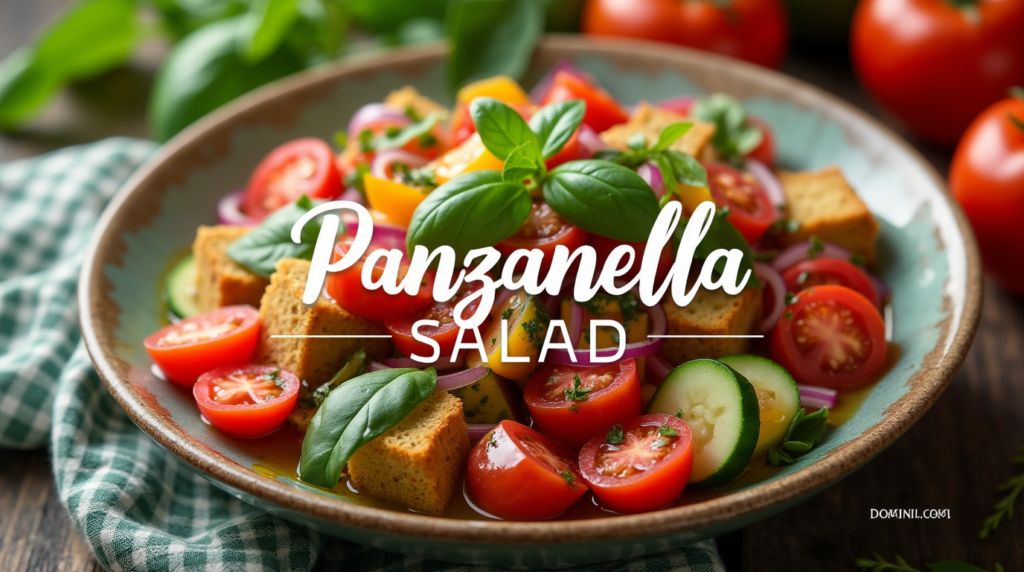
Nutritional Information
Per Serving (Serves 6):
- Calories: 225
- Total Fat: 12g
- Protein: 5g
- Carbohydrates: 24g
- Fiber: 3g
- Sodium: 440mg
- Sugar: 6g
Serving Suggestions & Variations
Regional Italian Variations
The beauty of traditional Italian cooking lies in its regional diversity. While the Tuscan version remains the most recognized, other regions have adapted Panzanella to showcase their local ingredients:
- Ligurian Style: Add a few chopped anchovy fillets and black olives for a Mediterranean twist that echoes the flavors of the Italian Riviera.
- Sicilian Influence: Include toasted pine nuts, golden raisins, and a pinch of saffron for a sweet-savory combination reflective of Sicily’s diverse culinary heritage.
- Northern Italian Version: Incorporate white beans and thin slices of fennel for a heartier adaptation that speaks to the cooler climate of northern Italy.
- Pugliese Touch: Add burrata cheese and crushed caper berries for a rich variation from Italy’s southeastern region.
Modern Adaptations
While traditionalists might insist on keeping Panzanella simple, contemporary interpretations have expanded the salad’s possibilities:
- Protein Additions: Transform Panzanella into a complete meal by adding grilled chicken, flaked tuna, or cannellini beans.
- Grain Alternatives: For those avoiding gluten, substitute the bread with cooked farro, barley, or gluten-free bread.
- Seasonal Adaptations: Create an autumn version with roasted butternut squash, sage, and toasted pumpkin seeds.
- Grilled Components: Lightly char the bread, tomatoes, and bell peppers on the grill before assembling for a smoky dimension.
Perfect Pairings
Panzanella’s bright flavors and rustic character make it an excellent companion to various dishes and beverages:
- Wine Pairings: A crisp Vermentino, light Chianti, or dry rosé complements the salad’s acidity and herbal notes.
- Main Course Partners: Serve alongside grilled fish, herb-roasted chicken, or as a starter before a simple pasta dish.
- Occasion Planning: This salad is perfect for summer gatherings, as it can be prepared partly in advance and actually improves after sitting for a short while.
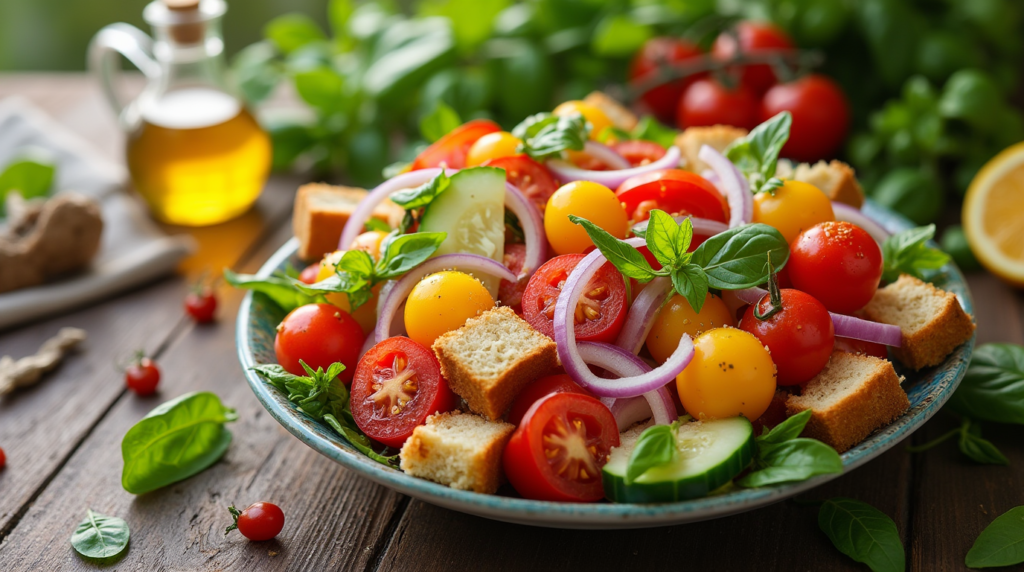
Conclusion
This authentic Panzanella salad recipe is more than just a way to use leftover bread—it’s a celebration of summer’s bounty and the brilliance of Italian cuisine’s “waste nothing” philosophy. The magic happens as the bread soaks up the dressing and tomato juices, creating a harmonious blend of textures and flavors that perfectly captures the essence of Tuscan cooking.
Have you made our Panzanella? We’d love to see your creations! Share photos on social media with #HomemadePanzanella or leave a comment below describing your favorite variations. Whether you stick to the traditional recipe or add your own creative twist, this vibrant salad is sure to become a summertime staple in your home.
Quick Share: Enjoying this summer classic? Pin this recipe to your Italian cuisine or summer recipes board, and spread the love for authentic Tuscan cooking!

